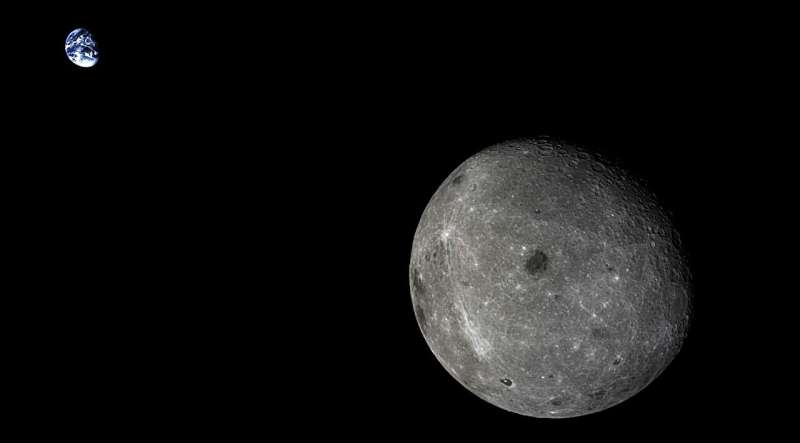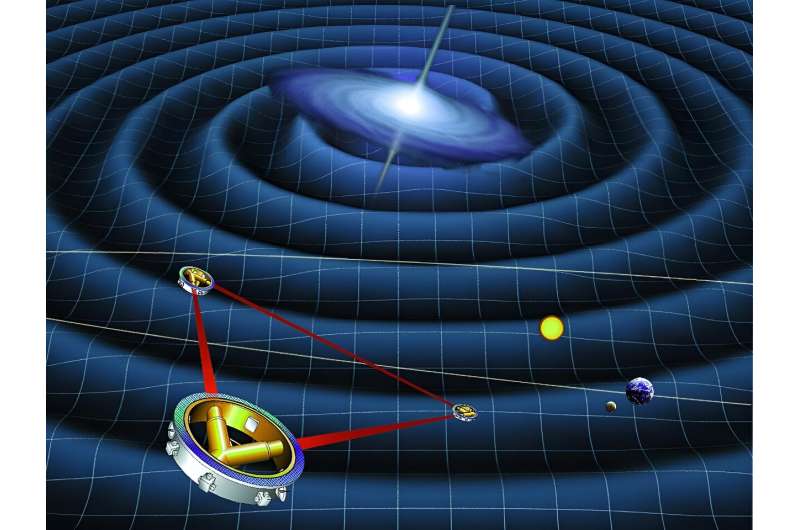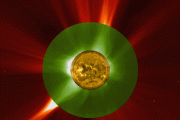
Copernical Team
Lockheed Martin opens $16.5M Missile Defense Lab
 In a significant development for the U.S. missile defense capabilities, Lockheed Martin (NYSE: LMT), a global leader in aerospace and defense technologies, unveiled a new state-of-the-art engineering facility at its Huntsville campus.
The $16.5 million Missile System Integration Lab (MSIL) stands as a testament to Lockheed Martin's commitment to advancing missile defense innovation and str
In a significant development for the U.S. missile defense capabilities, Lockheed Martin (NYSE: LMT), a global leader in aerospace and defense technologies, unveiled a new state-of-the-art engineering facility at its Huntsville campus.
The $16.5 million Missile System Integration Lab (MSIL) stands as a testament to Lockheed Martin's commitment to advancing missile defense innovation and str Heat Shield demo passes the test dubbed 'Just flawless'
 Hampton VA (SPX) Nov 20, 2023
A little more than a year ago, a NASA flight test article came screaming back from space at more than 18,000 mph, reaching temperatures of nearly 2,700 degrees Fahrenheit before gently splashing down in the Pacific Ocean. At that moment, it became the largest blunt body - a type of reentry vehicle that creates a heat-deflecting shockwave - ever to reenter Earth's a
Hampton VA (SPX) Nov 20, 2023
A little more than a year ago, a NASA flight test article came screaming back from space at more than 18,000 mph, reaching temperatures of nearly 2,700 degrees Fahrenheit before gently splashing down in the Pacific Ocean. At that moment, it became the largest blunt body - a type of reentry vehicle that creates a heat-deflecting shockwave - ever to reenter Earth's a China Enhances Ocean Observation Capabilities with Launch of HY-3A Satellite
 In a significant advancement in its space capabilities, China has successfully launched the HY-3A, a new-generation ocean observation satellite. The launch, which took place on Thursday, marks China's 53rd rocket launch this year, underscoring the country's accelerated pace in space endeavors.
The HY-3A satellite was lofted into space atop a Long March 2C carrier rocket from the Jiuquan Sa
In a significant advancement in its space capabilities, China has successfully launched the HY-3A, a new-generation ocean observation satellite. The launch, which took place on Thursday, marks China's 53rd rocket launch this year, underscoring the country's accelerated pace in space endeavors.
The HY-3A satellite was lofted into space atop a Long March 2C carrier rocket from the Jiuquan Sa Satellogic receives NOAA license to expand US Govt business
 Satellogic Inc. (NASDAQ: SATL), a frontrunner in the Earth Observation (EO) industry, has achieved a significant milestone in its U.S. expansion strategy. The company announced that it has been granted a remote sensing license by the National Oceanic and Atmospheric Administration (NOAA). This license is a strategic move for Satellogic, aligning with its ambition to leverage high-value opportuni
Satellogic Inc. (NASDAQ: SATL), a frontrunner in the Earth Observation (EO) industry, has achieved a significant milestone in its U.S. expansion strategy. The company announced that it has been granted a remote sensing license by the National Oceanic and Atmospheric Administration (NOAA). This license is a strategic move for Satellogic, aligning with its ambition to leverage high-value opportuni Pennsylvania Invests Millions in Astrobotic Technology
 Astrobotic Technology, a leading space exploration company, is expanding its presence in Pittsburgh, Pennsylvania, with an ambitious plan to create a 'space campus'. This move is set to bolster the region's reputation as a hub for innovation and space technology.
The company, which was spun out of Carnegie Mellon University in 2007 by William "Red" Whitaker, has acquired a five-story, 46,0
Astrobotic Technology, a leading space exploration company, is expanding its presence in Pittsburgh, Pennsylvania, with an ambitious plan to create a 'space campus'. This move is set to bolster the region's reputation as a hub for innovation and space technology.
The company, which was spun out of Carnegie Mellon University in 2007 by William "Red" Whitaker, has acquired a five-story, 46,0 MDA initiates work on a new digital satellite constellation
 MDA Ltd. (TSX: MDA), a leading provider of advanced technology and services to the rapidly expanding global space industry, has received an Authorization to Proceed (ATP) contract from an undisclosed customer to start work on a new Non-Geostationary Orbit (NGSO)* satellite constellation. The ATP, valued at approximately $180 million, is to immediately commence engineering and programmatic activi
MDA Ltd. (TSX: MDA), a leading provider of advanced technology and services to the rapidly expanding global space industry, has received an Authorization to Proceed (ATP) contract from an undisclosed customer to start work on a new Non-Geostationary Orbit (NGSO)* satellite constellation. The ATP, valued at approximately $180 million, is to immediately commence engineering and programmatic activi Korean space race? North and South chase spy satellites
 North Korea claimed Wednesday to have successfully put its first military surveillance satellite into orbit, with the South also preparing to send up its first spy satellite later this month.
The two launch attempts, set to come in such quick succession, appear to be the beginnings of a space race on the Korean peninsula.
Here, AFP takes a look at what we know about the new competition b
North Korea claimed Wednesday to have successfully put its first military surveillance satellite into orbit, with the South also preparing to send up its first spy satellite later this month.
The two launch attempts, set to come in such quick succession, appear to be the beginnings of a space race on the Korean peninsula.
Here, AFP takes a look at what we know about the new competition b Spaceflux and UK Space Command to boost GEO monitoring
 Spaceflux, a notable UK space technology company established in 2022, has recently been awarded significant contracts by the UK Space Command and the UK Space Agency. This collaboration is set to significantly enhance the United Kingdom's Space Domain Awareness (SDA) capabilities, focusing particularly on monitoring satellites in the strategically crucial geostationary orbit (GEO).
The com
Spaceflux, a notable UK space technology company established in 2022, has recently been awarded significant contracts by the UK Space Command and the UK Space Agency. This collaboration is set to significantly enhance the United Kingdom's Space Domain Awareness (SDA) capabilities, focusing particularly on monitoring satellites in the strategically crucial geostationary orbit (GEO).
The com Tracking an errant space rocket to a mysterious crater on the moon

In March 2022, a defunct part of a space rocket hurled toward the moon's surface and impacted near the Hertzsprung Crater, an enormous impact feature on the far side of the moon that is never directly visible from Earth.
Curiously, and unlike any other space hardware that ended up on the moon's surface, this one left behind not one but two craters, causing speculation about what exactly it was that found its final resting place on the moon's surface, according to Tanner Campbell, a doctoral student at the University of Arizona Department of Aerospace and Mechanical Engineering in the College of Engineering and the study's first author.
Paper explores ideal orbits for space-based interferometers

Ever since the telescope was invented in 1608, astronomers have striven for bigger and better telescopes. When it comes to instruments to observe the sky, bigger really is better whether you are observing faint galaxies or planets a larger collector gives higher resolution and brighter images. A paper by Takahiro Ito from the Institute of Space and Astronautical Science in Japan recently posted to the arXiv preprint server looks into different kinds of orbits around Earth which support multiple telescope systems known as interferometers at different orbits.
There is a limit to the size of telescopes based on Earth, they can become so large that they warp under their own weight so it is a constant battle to keep images sharp. An alternative solution is to hook up multiple telescopes so they work together. These interferometers work well on Earth but space-based instruments offer further challenges. In Ito's study, which looks into different types of orbits, it seems there is one orbit in particular that favor the space-based interferometer.
































